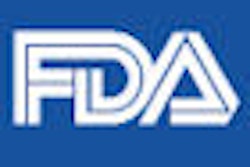
A new report submitted by the International Academy of Oral Medicine and Toxicology (IAOMT) this month to the U.S. Food and Drug Administration (FDA) warns that mercury from dental amalgam restorations is putting millions of Americans at risk.
According to the report, 67.2 million Americans are estimated to exceed the reference exposure level (REL) of 0.3 µg/m3 established by the U.S. Environmental Protection Agency in 1995. If the more protective REL of 0.03 µg/m3 established in 2008 by the California Environmental Protection Agency is used, then the current safe dose is probably exceeded by 122.3 million Americans, the IAOMT said in a press release.
The risk-assessment report was written by a team from SNC-Lavalin Environment, a division of SNC-Lavalin, a Canadian engineering and construction firm. The team was headed by G. Mark Richardson, PhD, the author of Health Canada's 1995 assessment of mercury exposure and risks from dental amalgam. Two private foundations funded the study, the IAOMT noted.
The authors used the latest statistical information on the U.S. population taken from the National Center for Health Statistics (NCHS). They also reviewed the most recent studies on the toxicology of mercury vapor, building on work by Health Canada that was published in 2009, and will also consider very recent studies on the use of dental amalgam in children, according to the IAOMT.
The report estimates mercury exposures to children as young as 26 months, the youngest age at which NCHS recorded restored teeth. It also estimates exposures for people with as many as 28 restored teeth, the maximal dental filling load recorded for the U.S. population, something the FDA previously has not considered, according to the IAOMT.
The FDA is scheduled to hold public hearings December 14-15, 2010, to review the science related to the health risks of mercury fillings, particularly for pregnant women, children, and other sensitive populations.
On July 28, 2009, the FDA issued a final rule that reclassified dental mercury from a class I device to class II, classified dental amalgam as a class II device, and designated special controls for dental amalgam, mercury, and amalgam alloy. The special control for the devices is a guidance, "Class II Special Controls Guidance Document: Dental Amalgam, Mercury and Amalgam Alloy."
Since that time, the FDA has received several petitions raising issues related to the final rule and special controls, including the adequacy of the risk assessment method used by the FDA in classifying dental amalgam, the bioaccumulative effect of mercury, the exposure of pediatric populations to mercury vapor, and the adequacy of the clinical studies on dental amalgam.
The use of mercury in dental products has already been banned in Denmark, Norway, and Sweden.
Copyright © 2010 DrBicuspid.com



















